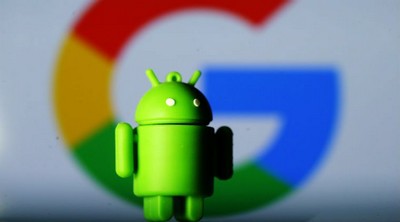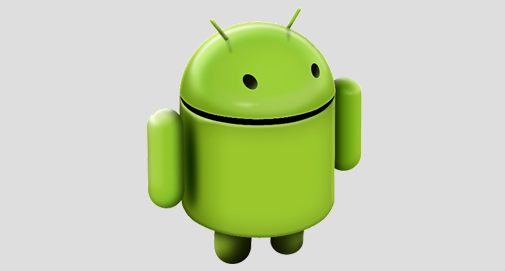
Introduction
“Not peppermint, not a pancake, not even the popsicle, it’s Pie time for Android lovers” Android “Pie” is the ninth and current major release and the 16th version of the Android mobile operating system. It was released publicly on August 6, 2018. On March 13, 2019, Google released a beta version of a successor code named Android Q
History
Android Pie, then referred to as “Android P”, was first announced by Google on March 7, 2018,and the first developer preview was released on the same day. The second preview, considered beta quality, was released on May 8, 2018. The third preview, called Beta 2, was released on June 6, 2018. The fourth preview, called Beta 3, was released on July 2, 2018. The final beta of Android P was released on July 25, 2018. Android “P” was officially released on August 6, 2018 as “Android 9 Pie” and was initially available for Google Pixel devices and the Essential Phone.The Sony Xperia XZ3 was the first device with Android Pie pre-installed.


Artificial intelligence in Android Pi
Google’s latest Android update has finally arrived, and it has yet another dessert-oriented name: Android Pie. The update’s major focus is on artificial intelligence – many of the features arriving with the update will learn your habits over time and use that information to streamline the Android experience. By using AI, Google hopes Pie will make your phone smarter, simpler, and “more tailored to you.” The update will arrive with a slew of new features designed to accomplish just that, including new device brightness and battery management tools.
Key features
This document shows you some of the cool new features of Pie!
Longer battery life
Battery Saver keeps your charge going longer than ever by turning off features like the Always-On display. Plus, you have more control over when it comes on. Adaptive Battery makes your phone go longer on each charge. It learns how you like to use your phone, so apps you don’t use won’t drain as much power. Background restrictions in Settings can stop certain apps that use too much battery, so you can have more control


Control your on-screen time
App dashboard shows daily view of the time spent on your phone, how frequently you use different apps, and how many notifications you get. Wind Down sets a daily schedule to get your phone ready for bed. Grayscale fades your screen to gray while Do Not Disturb silences notifications for a restful sleep. App timers let you set daily time limits for your apps. When you reach the limit, the app is paused for the rest of the day.
Media
Multiple Bluetooth connections can connect up to five Bluetooth devices and switch between these devices seamlessly. Incoming phone calls will be sent to all connected Bluetooth devices that can accept, so you’ll never miss a call. Volume memory for Bluetooth devices will remember the last volume you set for each of your Bluetooth devices. No more blasting music too loudly when you reconnect to your car or headphones. HDR built-in support, for the High Dynamic Range (HDR) VP9 Profile 2, lets you watch HDR-enabled movies on YouTube and Google Play Movies. HDR improves the brightness and color range of video to improve the picture quality and experience.


Notifications
Messaging apps can suggest quick replies in the notification, so you can respond in a tap. Turn off notifications from a range of apps, so you only receive helpful ones.
Private & security
Android Backups: Android 9 enables encryption of Android backups with a client-side secret (the device PIN, pattern or password) for greater security. Android biometric prompt: Android 9 introduces a number of new security features, including a standardized biometric authentication prompt to provide a more consistent authentication experience across Android. Android Protected Confirmation: On compatible hardware, apps can now use UI controlled by the secure hardware to get your confirmation for a sensitive transaction, such as making a payment. StrongBox: On compatible hardware, apps can now take advantage of tamper-resistant hardware to protect their private keys, making it harder than ever for malware to steal their credentials.

System Usability Enhancements
Screenshots can now be taken from the power menu and draw, annotate, or crop them quickly. New system navigation helps make it simpler to search and move between apps. Swipe up from anywhere to see full-screen previews of recently used apps, swipe left and right to easily navigate between them, and tap on one to jump in. App Actions predicts what you’ll want to do next based on your context and displays that action right on your phone, saving you time. Slices are interactive snippets of your favorite apps can be surfaced in different places, like Google Search. Overview Selection opens when you long-press text or an image, and you can see actions based on what you’ve selected (for example, an option to route to an address with Google Maps or share for an image).
Be aware that software from Samsung, LG, HTC, and other manufacturers canchange what features you may get.
Cons of android
Android 9 is not a big of a change as many would have liked. If there is one complaint it would be that it’s theme seems to be restriction . ” “Do not disturb” mode simplified but functionality was removed in the process, and the same goes for location services and the removal of OMS. Digital Wellbeing is cool but it’s main function is to restrict using your device more often . This is by far the most restricted version of android till date and while some of it is for good , some of it is a little worrisome.

Users
All the Pixel handsets were the first ones to receive Android Pie via OTAs (over the air) updates. Apart from these, select Android One smartphones have also been upgraded to the latest Android version.Some companies like Moto,HTC,Samsung,Sony,OnePlus,Nokia have upgraded their headsets to Android Pie version
Conclusion
Android has a reputation for being the tech savvy person’s OS, something that scares off a lot of the smartphone buying public. First Oreo and now Pie have been designed to rehabilitate that reputation. Pie makes the Pixel line every bit as approachable as the iPhone, even if Google’s primary focus is propagating its software and services rather than shipping hardware. But to those that have long loved Android’s exhaustive customization and freedom, Android 9 might feel a little hollow, at least in the form Google has released it. For those feeling a little disillusioned, other Android manufacturers will become an increasingly important factor in giving Android Pie enough spice to give it the flavor they crave.

Philosophical qualms aside, there is a lot of great stuff going on in Android 9 Pie, and I have to say I feel slightly guilty for enjoying it as much as I do while starting to realize what’s being lost along the way. As Android becomes more user-friendly, more intelligent, more clean and simple, it’ll increasingly melt into the background and become something that “just works.”
AI and machine learning will continue to make more and more decisions for us, but even if they’re totally accurate and appropriate, it’ll be hard to shake the feeling that something central to Android’s history has fallen by the wayside. As Android 9 Pie closes the gap and brings us one step closer to a seamless, polished, intuitive and fully automatic future, just know that if that thought fills you with equal parts excitement and longing for the good old days, you’re not alone.

